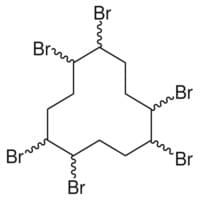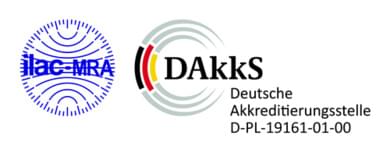Determination of HBCD in insulating materials built of polystyrene
In Germany, insulating materials made from polystyrene (PS) – Styrofoam with a content of HBCD higher than 1000 ppm are classified as hazardous waste since the 30th of September 2016 according to so-called POP-regulation, part of the Stockholm convention list and the German Waste Catalogue, Abfallverzeichnisverordnung, AVV.
Our services for you:
Reliable quick-test for determination of HBCD in insulating boards composed of polystyrene by means of X-ray fluorescence analysis
 What are HBCDs?
What are HBCDs?
HBCD or HBCDD (Hexabromcyclododecan, C12H18Br6) is a brominated flame retardant which was used for textiles and upholstered furniture. Its primary application was in extruded - XPS - or expanded - EPS - polystyrene foam that was used as thermal insulation.
Toxicity of HBCD and its harm to enviroment
HBCD is harmful to the environment because it is persistent and at the same time it accumulates in organism, i.e. it is bio-accumulative and has repro-toxic properties. It is ranked among the persistant organic pollutants, the so-called POPs.
Because of these properties the EC has already included it into the SVHC list, Substances of Very High Concern within the Registration, Evaluation, Authorisation and Restriction of Chemicals framework. In 2011 it was listed in REACH and is now subject to authorisation. In 2013 the substance was ranked worldwide as a Persistent Organic Pollutant according to the Stockholm convention. Since November 2014 there is a worldwide ban on its production and use.
Classification according to waste regulations
According to the POP regulation – EC No 850/2004, article 7 (2), all wastes that contain persistant organic pollutants must be disposed of in the sense that their POP content must be destroyed or irreversibly transformed.
Insulation materials are classified as containing POPs if their POP content is higher or equivalent to a certain concentration limit in Annex IV in the POP-regulation, the European Waste Catalogue, EWC or the German Waste Catalogue, Abfallverzeichnisverordnung - AVV.
The concentration limit for HBCD is 1000mg/kg and entered into force on September, 30th 2016.
Independent thereof an environmentally suitable disposal in incineration plants must be further guaranteed.
Source: Niedersächsisches Ministerium für Umwelt, Energie und Klimaschutz
Consequences
Old polystyrene insulating materials typically have HDCD contents of between 0.7% and 1.5 % and are clearly above the concentration limit of 1000 ppm (0.1%).
Since September, 30th 2016 HBCDs are classified as hazardous and require verification. Moreover they must be treated in authorised waste incineration plants.
According to German Waste Catalogue Ordinance HBCD containing waste of thermal insulators is therefore assigned to waste classification code number “17 06 03* other thermal insulators that consist of or contain hazardous substances” as of September, 30th 2016.
 Testing for the presence of HBCD
Testing for the presence of HBCD
Das German Federal Environmental Agency, Umweltbundesamt describes a quick test on the basis of XRF-analysis developed by Fraunhofer Institut IVV and BASF SE.
For this test HCBD is extracted from the insulation material with an organic solvent. Afterwards its concentration in the solution/ in the insulation material is determined with high precision by means of a handheld XRF.
We are working on the implementation of this analytic procedure and will offer it shortly.
Standards and guidelines for the analysis of HBCD in polystyrene
- DIN EN 16424:2015-03 - Characterization of waste - Screening methods for the element composition by portable X-ray fluorescence instruments
- DIN 51418-1:2008-08 - Röntgenspektralanalyse - Röntgenemissions- und Röntgenfluoreszenz-Analyse (XRF) - Teil 1: Allgemeine Begriffe und Grundlagen
- DIN 51418-2:2015-03 - Röntgenspektralanalyse - Röntgenemissions- und Röntgenfluoreszenz-Analyse (XRF) - Teil 2: Begriffe und Grundlagen zur Messung, Kalibrierung und Auswertung


